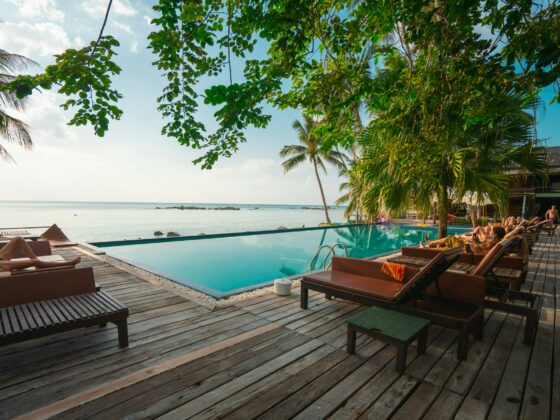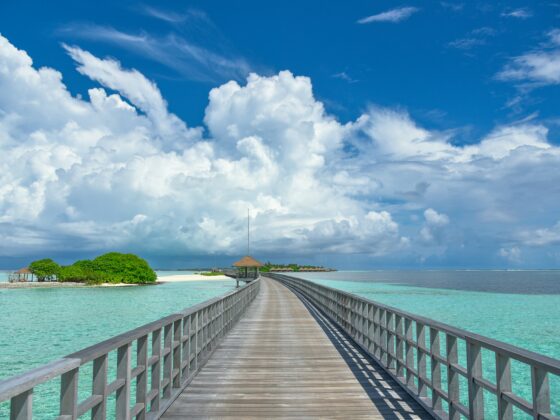
When news broke that Sonder was shutting down, my first thought wasn’t about SPACs, leases or capital markets. It was about the guests and teams suddenly caught in the middle.
Travellers in cities from New York to Dubai found out mid-stay that their accommodation was no longer available and that they had hours, not days, to find somewhere else to sleep. Some returned to find their belongings bagged up and left out for collection. Staff who had spent years building the brand woke up to discover that the experiment they’d poured themselves into was over.
Sonder’s collapse is more than another tech story. It is a human shock – and a warning about the kind of growth the travel and hospitality sector has been pursuing.
The end of a hospitality experiment
Over the last decade, Sonder grew rapidly as one of several new players trying to reimagine hospitality. Founded in 2014, it expanded to thousands of units across dozens of cities, pitching an apartment-style, design-led alternative to hotels.
Its model, particularly in its early years, relied on long-term leases and other fixed-cost agreements. Sonder would take on multi-year commitments for buildings or floors, then use technology and centralised operations to drive occupancy and margins. In an era of abundant, low-cost capital and enthusiasm for “asset-light” brands, that looked attractive.
The company raised hundreds of millions of dollars and went public via a SPAC in 2022 at a valuation close to $2 billion. But lease obligations remained high and losses persisted. As interest rates rose and investor tolerance for red ink fell, the margin for error shrank. Earlier this month, after a major licensing partnership unravelled, the company entered Chapter 7 bankruptcy and began an immediate wind-down.
This isn’t to suggest bad intent. Sonder’s founders and teams were trying to build something genuinely new. But the combination of long-term fixed commitments and short-term funding cycles created a model that was always one shock away from breaking. And when growth models are that brittle, guests feel it first.
When the music stops, who carries the risk?
In theory, an “asset-light” platform spreads risk. In practice, when things go wrong, the risk often cascades downwards.
In Sonder’s case, guests discovered that very quickly. People were moved out mid-stay. Others were left to navigate complex refund processes, at times being directed not to the brand they booked through but to their banks and card providers to pursue chargebacks.
For travellers, this is the moment where trust is either reinforced or broken. You discover whether the platform you booked with is truly on your side when the unexpected happens. And it doesn’t just damage one brand: experiences like this drain confidence in newer accommodation models more broadly. If you are a guest, the nuance of who owned the lease, who operated the building and who processed the payment is irrelevant – you did everything right and still ended up stranded.
Part of a wider “growth hangover”
It is tempting to treat Sonder as a one-off failure. It isn’t. It sits within a wider pattern in travel and hospitality.
The 2010s and early 2020s were defined by cheap money and a powerful narrative: scale fast, subsidise both sides of the marketplace, and worry about profitability later. Many travel and hospitality brands – from OTAs to short-term rental operators – were encouraged to prioritise inventory growth over sustainable unit economics.
We have seen versions of this play out in short-term rentals too. Platforms such as Airbnb unlocked enormous new inventories of beds and helped millions of people travel in new ways. In cities from Barcelona to New York, though, the speed of that growth has also contributed to overtourism and pressure on housing, prompting stricter registration, caps and enforcement.
Different models, similar pattern: externalities and risks pushed outwards to guests, residents, employees and neighbourhoods, while the upside is concentrated elsewhere.
As the funding environment normalises and regulators catch up, we are moving into a painful “hangover” phase. Companies built on subsidy, leverage or regulatory arbitrage are under pressure. Those with fragile economics are failing. And those who rely on them are discovering how exposed they really are.
Underneath the spreadsheets: trust and alignment
If we strip away the jargon, the core issue is trust and alignment.
Too many platforms have been incentivised to optimise for transactions and discounting rather than long-term relationships. The common success metrics – nights sold, units onboarded, top-line growth – often say very little about whether guests and hosts actually feel looked after, or whether the platform will stand by them under stress.
Decades of research show that satisfaction, loyalty and advocacy are not “soft” concepts; companies with higher customer loyalty tend to grow faster and generate better economics over time. The challenge is to build models where the platform’s success is aligned with positive outcomes for guests, hosts, owners and communities – not just with short-term volume.
Across sectors, models built on membership, community and recurring value have often proved more resilient in crises than those reliant on one-off transactions. Their economics are anchored not in perpetual discounting but in the ability to earn renewal, year after year.
TrustedHousesitters, which I lead, is one example. We are a membership community where pet owners and sitters commit upfront, then support one another: owners get trusted care; sitters get the chance to travel while living like a local with a pet by their side. There is no per-night commission; the incentive is to help members have great experiences so that they renew – something many of them chose to do even through the pandemic, when almost nobody could travel.
That does not make us perfect, nor does it mean membership is the only answer. But it illustrates a broader point: when people are genuinely invested in a platform and in each other, you have more than a bookings engine. You have resilience.
From “more rooms” to “more confidence”
So what should we, as an industry, take from the Sonder story?
For leaders and investors, the lesson is to bring trust into the core of strategy. Design models that don’t collapse at the first shock. Treat retention, complaint resolution and guest advocacy as board-level metrics, not afterthoughts. And be honest about where risk really sits: on your balance sheet, or on guests, staff and local communities.
For policymakers, Sonder is another reminder that platform risk is not purely private. When a hospitality brand fails abruptly, guests, hosts, employees and neighbourhoods can all be left to pick up the pieces. Clear consumer protection, sensible rules for short-term rentals and basic expectations around contingency planning are not anti-innovation; they’re the foundations of a sustainable ecosystem.
Over the last decade, our sector has been obsessed with adding supply: more rooms, more brands, more listings, more “experiences”. In many markets, that growth has outpaced sustainable demand, and we are now seeing the strain – in balance sheets, in housing markets, and in guest trust.
The next decade needs to look different. Travel doesn’t need ever-more inventory so much as deeper confidence between people: between guests and the places they visit, between hosts and the platforms they rely on, between communities and the tourism that sustains them.
Sonder’s collapse is a painful moment for everyone involved. But if it helps us move from a mindset of “growth at all costs” towards models where trust, alignment and resilience are the real measures of success, it may yet prove to be a turning point our industry needed.








